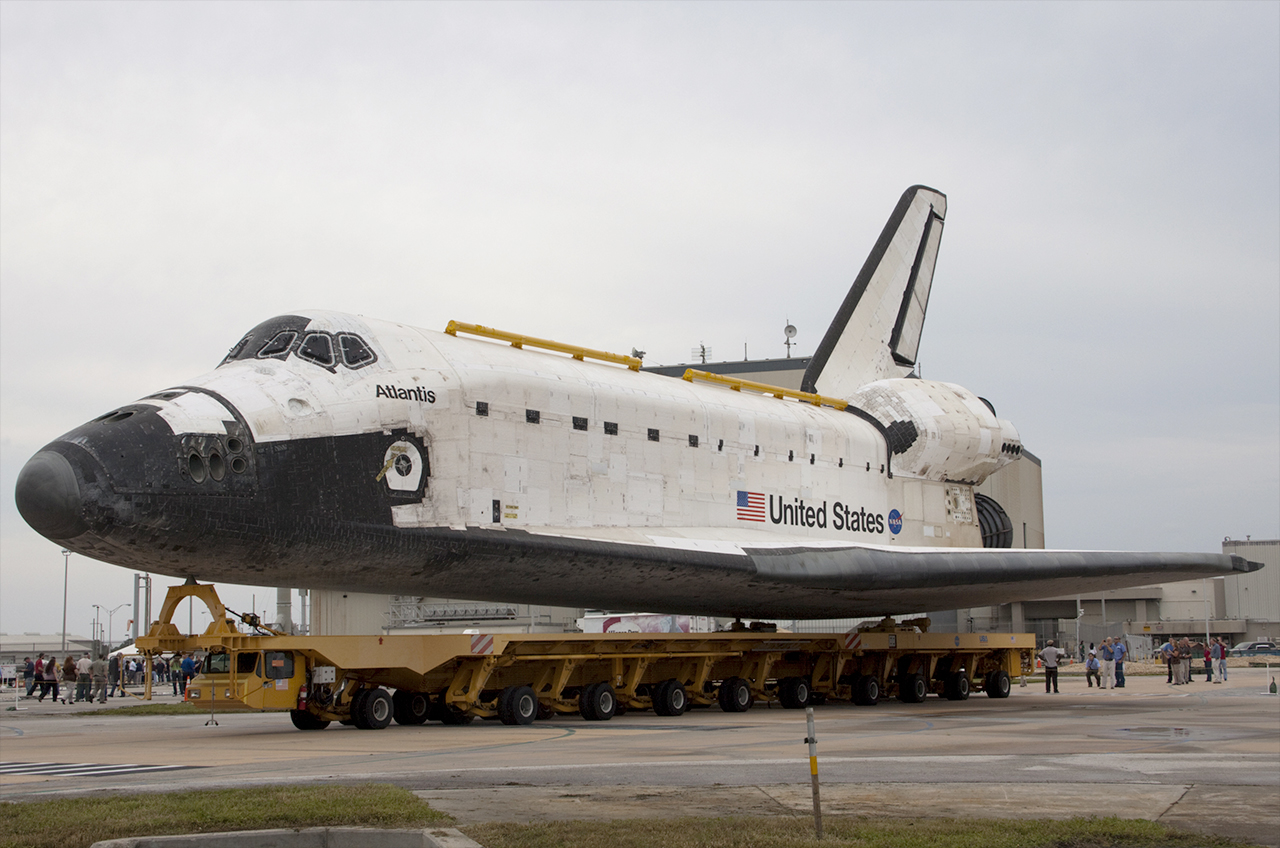

Haise and Fullerton flew onboard Enterprise for the first, third, and fifth free-flight tests.


NASA chose another crew, NASA astronauts Joe Engle and Richard Truly, to alternate with Haise and Fullerton for the free-flight tests. Two crews of two were selected for the free-flight tests.
#Space shuttle enterprise vafb series
Perhaps most importantly, these free-flight tests proved that shuttle orbiters could land upon their return from space.Ĭheck out these five fast facts about this series of free-flight tests as we remember Enterprise’s historic feat! 1. The mission was a success!įour additional free-flight tests were conducted that year.īoth the captive and free-flight tests proved that shuttle orbiters could fly atop the SCA in a piggyback formation, which was necessary to ferry shuttle orbiters from Dryden, where they would be landing, to Florida, where they would launch again. The shuttle orbiter and the SCA separated and then Enterprise was flying on its own (see video below)! Haise and Fullerton glided Enterprise down to the lakebed runway and safely landed. The release happened at 8:48 a.m., slightly behind schedule. According to NASA, a crowd of roughly 65,000 visitors, 900 members of the press, and 2,000 special guests, had gathered to witness the historic event. the SCA accelerated down the runway with Enterprise atop in piggyback formation. Onboard Enterprise were two NASA astronauts, Fred Haise and Gordon Fullerton. 12, 1977, Enterprise took the next giant leap in NASA’s space shuttle Approach and Landing Test (ALT) program: free-flight.Įarlier that year, Enterprise, NASA’s first space shuttle orbiter, arrived at Dryden Flight Research Center at Edwards Air Force Base in California.įollowing eight captive-carry flights, which piggybacked off a modified Boeing 747 Shuttle Carrier Aircraft (SCA), Enterprise was finally ready for its first free-flight test. Follow for the latest in space science and exploration news on Twitter and on Facebook. You can follow senior writer Mike Wall on Twitter. Discovery will go to the Smithsonian, which is why Enterprise is being shipped out to New York.Ītlantis will be displayed at the Kennedy Space Center Visitor Complex in Florida, while the California Science Center in Los Angeles gets Endeavour. The remaining orbiters are headed to museum retirement homes. The space shuttle fleet was grounded after Atlantis' STS-135 mission landed this past July. "After Challenger was lost, NASA briefly considered retrofitting Enterprise to become its replacement, but ultimately found using the spare components left over from building Discovery and Atlantis to assemble Endeavour a more cost-effective approach," Pearlman said. The Challenger tragedy spurred NASA officials to think about sending Enterprise to space, Pearlman said. Challenger exploded shortly after liftoff in January 1986, killing all seven crewmembers onboard. Ĭolumbia made the shuttle program's first spaceflight in April 1981 but was lost along with its entire seven-astronaut crew in a 2003 re-entry accident.

It still sits there today, but the shuttle will soon be heading to the Intrepid Sea, Air & Space Museum in New York City.įive space-ready orbiters joined the shuttle fleet after Enterprise: Columbia in 1979, Challenger in 1982, Discovery in 1983, Atlantis in 1985 and Endeavour in 1991. In 1985, NASA handed Enterprise over to the Smithsonian Institution's National Air and Space Museum near Washington, D.C. The orbiter also journeyed to New Orleans for the 1984 World's Fair. and SLC-6 at Vandenberg Air Force Base, Calif.," Pearlman told in an email.Įnterprise also traveled the world as a showpiece, making stops in Canada, France, Italy, Germany and England in 1983. Then, from 1978 to 1985, Enterprise was ferried to various NASA centers, where it served as a sort of practice tool for engineers working on flight-ready space shuttles.Įnterprise "was the 'fit-check' vehicle for the space shuttle on two launch pads - Complex 39 at the Kennedy Space Center, Fla. These trials proved out the shuttle's design, demonstrating its airworthiness and landing abilities. Over the next nine months, NASA engineers put Enterprise through a series of ground and flight tests. 31, 1977, NASA transported Enterprise 36 miles (58 kilometers) overland to the space agency's Dryden Flight Research Facility at Edwards Air Force Base. The tests were conducted to verify aerodynamics and handling characteristics in preparation for orbital flights with the Space Shuttle Columbia, which began in April 1981.
#Space shuttle enterprise vafb free
The space shuttle prototype Enterprise flies free after being released from NASA's 747 Shuttle Carrier Aircraft over Rogers Dry Lakebed during the second of five free flights carried out at the Dryden Flight Research Center, in Edwards, Calif., as part of the shuttle program's Approach and Landing Tests (ALT).


 0 kommentar(er)
0 kommentar(er)
